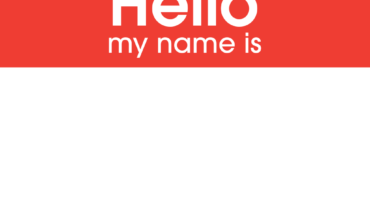Quality Connections
Judging from our own information-age society (vs. Sub-Saharan Africa for example), we are technologically over-connected. Especially now, with 33 million blogs on top of the splintered news stand, digital TV, and, well, you name it. Florian makes some great points which in some way include the thought of “are we better off today than we were when the world was smaller?”
Clearly this is academic. We are different today. The excitement around new ways to communicate facilitated by Web 2.0 thinking (keep it simple, stupid) is generating a lot of activity – 800,000 blog posts daily for example. The tricky part is sifting through all this activity to remain connected to what is relevant. How many blogs in your aggregator? How many can you “skim”? In our current phase – personal media pink cloud – we are overwhelmed with connections and must all make the choice of volume over quality and relevance. Pity the A-list blogger who has to churn out posts at such a pace that relevance has nothing to do with what they are doing.
So, the time has come for the new Web 2.0 innovators – us – to focus on quality connections versus just new ones. And what about Florian’s point that this connectedness is superficial and robs us of real-wrold connections? I would suggest keeping an eye on this year’s political campaigns – not just here in the US. We will see digital connections made local like never before. And remember Meet Up? Made “famous” in the previous US Presidential election back when we were in Web 1.5 land. They bridge the gap between digital and real-world connections quite well.
TAG: wemedia
Previous Comments
I like the idea of web 1.5!
There has been much written about the negative aspects of social networking sites like MySpace, but this recent Washington Post article provides me with a bit of hope that it can be used to get people “acting” on issues.
Kellie Mylko, 15, a sophomore at Washington-Lee, said she helped organize the effort to show that students “have a voice.”
“We are the next major bloc of voters,” she said. “They need to know what we think.”
As with protests earlier this week, students learned of the action by word of mouth, fliers, text messages, and the Web site MySpace.com.
It is my hope that the web 2.0 can continue to show some concrete results, instead of having these technologies around for the heck of it.
Hi, My name’s Kellie,I live in Arlington VA. I’m mentioned below lol.
Although the media has a negative veiw on social networking sites, they can be quite helpful, through myspace, my event information got passed around to almost 3,000 kids, and we had about 1800 at the protest 🙂 It was a great tool to alert everyone of what was going on 🙂
I’m very thankful for it.
John heads up the 360° Digital Influence team – Ogilvy PR’s global, digital word of mouth marketing practice designed to manage brands at a time when anyone can be an influencer and we are all influenced in new ways. His team has developed and executed social media strategy for clients as diverse as Intel, Lenovo, Kraft, Unilever all the way to the federal government. The team’s focus is on engaging through conversations, outreach to new influencers and word of mouth marketing.
John is a Web 1.0 graduate. As Creative Director at Discovery Communications, he transformed a single web site into 14 Web communities and services from DiscoveryKids.com to Animalplanet.com and more. In the early nineties, when interactive television was imminent, John headed up the creative studio for the joint ITV venture between Viacom and AT&T.
Currently, John serves on the board of the Word of Mouth Marketing Association. He teaches graduate studies in Digital Influence at Johns Hopkins University.
His blog is: The Digital Influence Mapping Project – http://johnbell.typepad.com
His twitter name is : jbell99




Well, the web 2.0 is like any other marketplace. One could argue that too many books are being published or that there are too many music bands.
The world is large enough to accomodate all the creativity there is. The challenge however is to tap those on the other side of the digital divide. The interesting thing about a free market is that it reaches out to places that are on the other side of the divide.
Which is why newer telecom technologies seem to make it to Africa faster than the first generation telecome services. For instance, cell phone networks proliferate faster than landlines.
There can never be too many blogs! 🙂